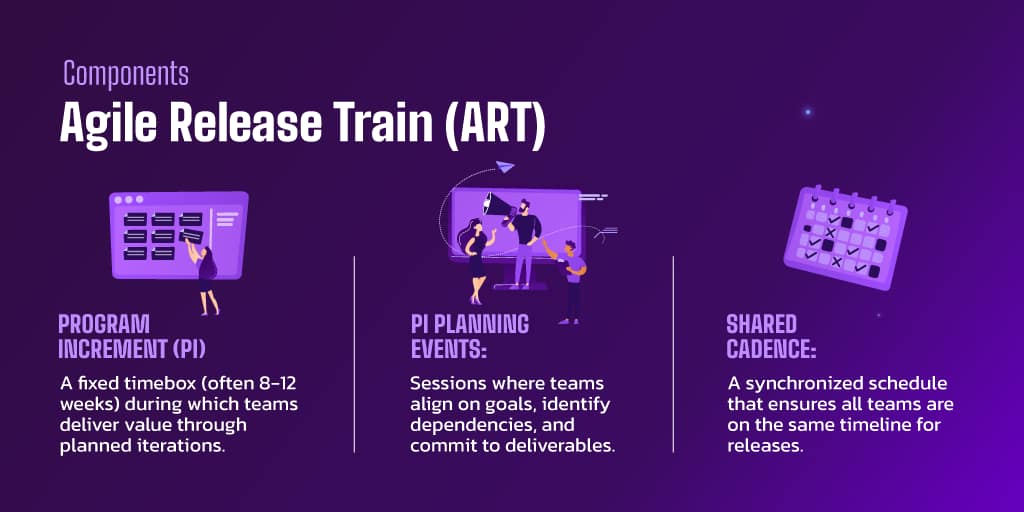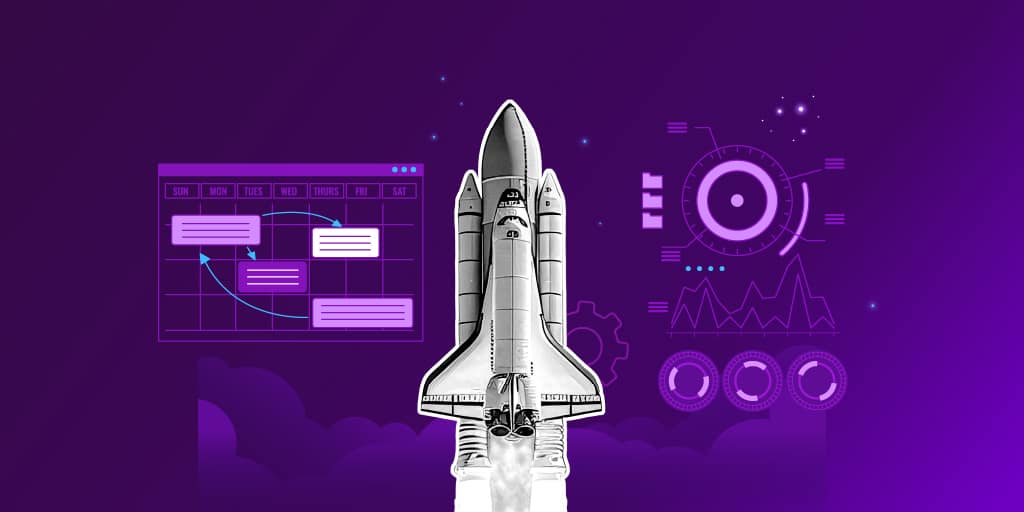Quick Overview
Enterprise release management helps organizations coordinate complex, cross-team software deployments. In this article, I share 10 lessons on how we improved release quality and predictability by combining a structured release train with automation, metrics, and a collaborative process built with tech leads, PMs, and engineers.
If you're looking for a broader view of the discipline, our Essential Guide to Software Release Management (2025) covers foundational strategies and trends.
Enterprise Release Management Foundations: From Anomie to Autonomy
Working in an environment with autonomous, efficient, and genuinely sharp squads was a privilege, especially when you’re helping build a product that over 14 million people use daily. I was surrounded by talented folks, a shared codebase, and ample space to experiment. The culture was collaborative and fun, with the right touch of chaos.
But here’s the catch: when every team works independently in the same codebase, you hit friction. Fast. Each squad wanted to move quickly, which made sense, until a few scattered deploys led to bugs in production. Bugs that affected a huge user base. Frustration mounted. Trust took a hit.
That’s when we pulled together a working group, devs, tech leads, PMs, and QA. We weren’t there to create bureaucracy. We just wanted a process that kept autonomy but introduced coordination. The answer was our version of a release train, a weekly rhythm, supported by automation, with just enough structure to make collaboration work.
This article shares the lessons that shaped our approach and lays out key enterprise release management best practices built from the ground up, by the people closest to the deploy button.
1. Establish a Coordinated Release Train
Every Thursday, at 10 a.m., the train left, whether you were ready or not. To give QA breathing room, we froze the release branch on Tuesday at 6 p.m. Those two days of margin saved us hours of debugging on Saturday mornings. The difference was clear: fewer late-night hotfixes, better cross-team alignment, and a shared rhythm that brought clarity to everyone involved.
Our approach mirrors the Agile Release Train (ART) model in SAFe (Scaled Agile Framework), sharing its focus on cadence, predictability, and cross-team alignment. For those working in a scaled agile environment, this SAFe Release Management guide explains how ART enables enterprise release coordination.
The diagram below illustrates the key components and workflow of a typical Agile Release Train process.

Agile Release Train (ART) Components
Enterprise Release Management (ERM) is a structured approach for planning, coordinating, and controlling software releases across multiple teams, projects, and systems within an organization. It ensures that all changes, from development to deployment, are aligned with business goals, thoroughly tested, and released with minimal risk. ERM focuses on visibility, quality, and synchronization, allowing large enterprises to deliver updates quickly without compromising stability or disrupting operations.
2. Automate Entry Rules and Code Quality Controls
No one likes arguing over whether a commit should go in. So we let the pipeline do the talking. Our CI/CD setup enforced rules like blocking merges if test coverage dropped, enforcing code standards with linting, and requiring that builds and tests pass. No green check, no merge.
This automation eliminated subjectivity and helped reduce conflict. Most importantly, it raised the bar for quality. One squad, for example, saw post-release incidents drop from 12 to just 3 per cycle.
3. Deploy Early, Release Late: Progressive Delivery in Practice
We started treating deploy and release as two separate steps. The code was deployed to production behind feature flags on Monday. On Tuesday, we opened a canary rollout to just 5% of users. If error rates exceeded 1%, the process would trigger an automatic rollback, ensuring the rest of the user base was never affected.
In week 7, for instance, the canary detected a latency spike from 400 ms to 1 second in the payments service. The rollout was halted and reverted within 12 minutes. Total user impact? Less than 0.3%.
This kind of progressive delivery significantly reduced risk and gave us the confidence to operate with agility and control. By integrating security scans and compliance checks directly into our progressive rollout stages, our DevSecOps practices became a natural extension of our delivery pipeline, and each phase of the rollout included security validations, making protection an integral part of our deployment strategy rather than a separate concern.
4. DevSecOps in the Pipeline: Build with Guardrails
Security and compliance are part of the delivery, and not just checkboxes. Our pipeline had four distinct stages:
- Build + Unit Tests
- SAST + Lint + SBOM Check (block if CVSS ≥ 7)
- End-to-End Tests + DAST in staging
- Tag release with SemVer + push to prod
Every stage had automated gates. If something failed, it didn’t ship. As simple as that.
This helped us move fast without skipping safety.
5. Observe Everything: From Deploy to Impact
Observability was essential. We implemented structured logging and distributed tracing so we could track activity across services. Latency and error metrics were tied to alerts through PagerDuty, and these alerts were mapped to service-level objectives.
With this setup, we could detect issues quickly and respond intelligently, no scrambling, no guesswork. Enterprise release management works best when monitoring is part of the plan, not an afterthought. For practical strategies and a broader operational view, we referenced Atlassian’s incident management guide.
6. Release Readiness: Structure vs. Uncertainty
We created a non-negotiable release checklist that every deployment had to follow:
- No critical/high bugs open
- All automated tests passed
- Stakeholders notified
- Release notes written and distributed
We maintained this structured approach to launch requirements, similar to what's outlined in The Essential Release Checklist (2025).
We automated release notes by connecting Jira to our CI/CD pipeline. No more "I'll write the notes later" (we all know what that means 😅). Using Jira's built-in release notes functionality, our templates auto-magically categorize changes, add summaries, and include technical impacts and rollback steps. Goodbye manual docs, hello happy teams!
7. Git Strategy and Versioning Discipline
We chose a Trunk-Based Development approach over GitFlow because it reduced branch complexity, minimized merge conflicts, and gave us tighter feedback loops through CI. Each release was tagged with a SemVer version, and changelogs were generated automatically. Clean, consistent versioning helped both developers and stakeholders stay on the same page.
When you scale enterprise release management, the simpler your branching model, the better.
8. What are DORA Metrics? The Scorecard That Mattered
DORA stands for DevOps Research and Assessment. It's a framework that helps measure software delivery performance through four key metrics: lead time for changes, deployment frequency, change failure rate, and mean time to recovery (MTTR). These metrics provide visibility into how efficient, stable, and resilient your delivery process is.
We adopted DORA metrics to track how well our process was performing. Here’s what changed in just three months:
Metric | Before Release Train | After 3 Months |
|---|---|---|
Lead Time | 5.2 days | 1.9 days |
Deployment Frequency | Weekly | 2x Weekly |
Change Failure Rate | 24% | 8% |
MTTR | 9 hours | 2.5 hours |
These weren’t vanity metrics. They helped us justify improvements to leadership and gave teams a real sense of progress. On top of engineering metrics, we tracked business impact using churn and NPS data. Stabilizing delivery correlated with a 12% drop in support tickets over two quarters.
9. Communicate Like It’s Production-Grade
We treated communication as part of the product. Ahead of each release, we notified impacted teams. During rollout, we shared real-time status through Slack and dashboards. Afterward, we sent summaries with links to logs and notes.
For deeper guidance on visibility and alignment, the eBook: Mastering Communication with Release Dashboards became our go-to reference for building habits that scale.
We also kept our CAB meetings short and asynchronous when possible. A 15-minute sync was enough to stay aligned.
10. Cultivate Learning and Resilience
Every release ended with a retro. We focused on facts, not blame. We used 5 Whys to get to the root of issues, assigned clear action items with owners and deadlines, and occasionally ran Game Days to simulate failures. These retros prepared us to face the unexpected and trained the team to execute fast rollbacks with confidence.
11. Scaling the Release Train
As your organization grows and the number of squads multiplies, one weekly release train may not scale. What worked for us was dividing the train by domains. Each domain owned its release cadence, but we synchronized dependencies via a shared calendar and mandatory coordination calls for cross-cutting changes. This avoided bottlenecks without compromising autonomy.
With these 11 lessons we learned, we improved alignment without giving up autonomy. Our enterprise release management became more reliable, safer, and easier to manage across teams. Here are the main things you should remember:
Key Takeaways
- A weekly release train aligned squads without sacrificing autonomy.
- Automation, flags, and metrics created clarity and safety.
- DORA metrics tracked progress and made the impact visible.
- DevSecOps pipelines prevented any unreviewed code from reaching production.
- Progressive delivery and structured communication protected users and supported teams.
- Release discipline enabled freedom and trust.
- The approach scaled across domains without central bottlenecks.
Transform your Test Environment Management with Apwide Golive:
Leading companies have already Golive as part of their DevOps toolchain:





Free trial / Free forever up to 10 Jira Cloud users!


